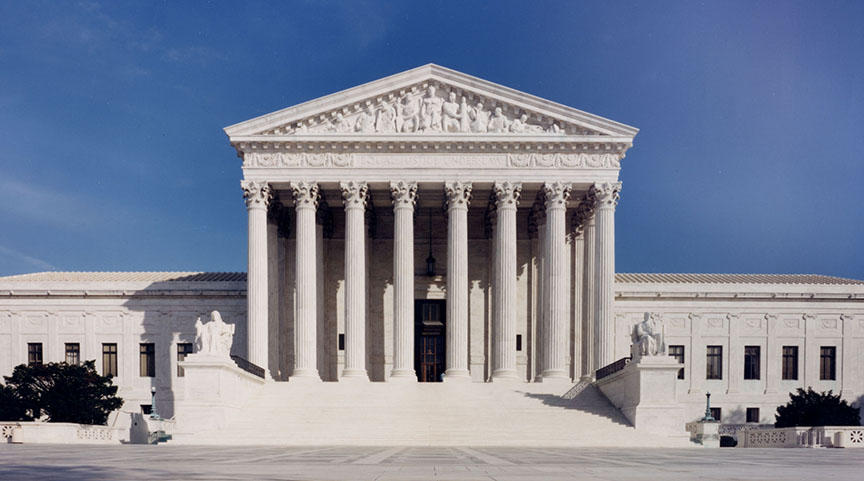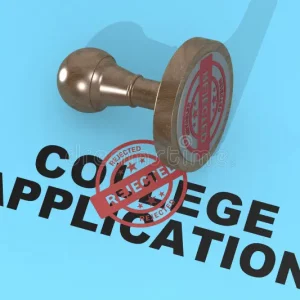The relentless news cycle fixated on election and presidential transition turmoil made it relatively easy to forget that on October 26th, 2020, the Senate voted 52 – 48 to confirm Justice Amy Coney Barrett’s nomination to the Supreme Court. Her nomination solidifies not only a conservative majority, but an overwhelming 6-3 conservative majority on the Supreme Court. At this point, the court is skewed, perhaps for the duration of our lifetimes.
Justice Barrett, as we heard throughout the hearings, is an explicit champion of judicial originalism, a philosophy that other conservatives on the court, including her mentor, Justice Scalia, have championed. Generally, originalism refers to a judicial philosophy that argues that the text of the Constitution should be interpreted strictly as it was written, or as Barrett herself puts it: “I understand it to have the meaning that it had at the time people ratified it. So that meaning doesn’t change over time.”
I use the word “argue” intentionally in that originalism represents one of a multitude of possible judicial philosophies that can and often do work in conjunction with each other. Textualism is similar to originalism. It is a philosophy that bases legal decisions on the plain text of laws, much as originalism bases legal decisions on the plain text of the Constitution. On the other hand, legal scholars often contrast judicial originalism with a more flexible interpretation of the constitution, a view that treats the Constitution as adaptable in a modern age. Judicial activism stands orthogonal to both these philosophies and refers to judges influencing political and policy decisions often in light of personal political beliefs and can be applied to both liberal and conservative judges. The tensions between these philosophies have been long alive in courts, but the increasing polarity of the Supreme Court itself is indicative of the prevalence of originalism in some of the largest decisions made in the country.
Proponents of originalism, namely Justice Scalia, argue that originalism keeps judges “bound” to their words and limits subjectivity in the decision making process. Gorsuch, perhaps a looser originalist, but a self-described originalist nonetheless, writes that originalism preserves the Constitution “as it was written.”
However, judicial originalism is a problematic philosophy often because it can be a “cloak” for conservative judicial activism despite claiming to treat the Constitution as a rigid document.
The Constitution should represent the plurality that makes up this country, but should not act as an authoritative piece of text that word-for-word dictates the law of the land. It is meant to be debated, to be interpreted as our society advances and changes while still maintaining the original principles of freedom. The spirit of the democratic society we live in demands that we regularly debate the meaning of the Constitution in order to progress.
As Justice Thurgood Marshall once said, “I cannot accept this invitation [to celebrate the bicentennial of the Constitution], for I do not believe that the meaning of the Constitution was forever ‘fixed’ at the Philadelphia Convention … To the contrary, the government they devised was defective from the start.”
To echo Pete Buttigieg, our judicial system cannot be about “time-traveling” to the 18th century. The Constitution has, at times, failed to live up to its ideals. Courts held that the Constitution allowed slavery and segregation, and limited who could vote in this country. Our society has progressed because judicial decisions like Brown v. Board and Obergefell v. Hodges have pushed us towards a better society.
In fact, as the Dean of our own Law School says, “Following originalism would mean that Brown v. Board of Education was wrongly decided in declaring laws requiring segregation of schools unconstitutional.” There is no constitutional provision restricting or prohibiting segregation: the justices instead found that segregation infringed on the Constitution’s ideological foundation. It’s important to note that modern originalists agree with Brown v. Board even though it was not an “originalist” ruling. Therefore, clearly even “originalists” admit that originalism does not always lead to correct rulings. The Dean continues by noting the original understanding of the conversation would have prohibited us from “elect[ing] a woman as president or vice president until the Constitution is amended.”
It isn’t originalism that has pushed, reformed, and made our society better. Our society and laws adapt and change. The Constitution is a “living, breathing” document because the society we live in is a kinetic society which grows, advances and betters over time in the hopes of achieving a more perfect union.
An Example: Citizens United
We can take an example like Citizens United, a court case which was decided 5-4 in 2010. Basically, The Federal Election Campaign Act prohibited corporations from using certain funds to advocate either in favor or against a political candidate. However, in 2008, a non-profit released a critical documentary of then-presidential candidate Hilary Clinton, breaking FEC act. The case went to the Supreme Court, and the Court ruled that the Federal Election Campaign Act violates certain First Amendment rights. One of the criticisms of the decision is that it treats giant corporations with funds as individuals and gives them the same free speech rights.
A conservatively skewed court, which disproportionately represented originalists, decided the case 5-4. However, the question becomes whether the Citizens United is really an originalist decision.
Originalists identify closely with the principles of Stare Decisis: “to stand by things decided.” However, as Geoffrey R. Stone, First Amendment scholar and law professor argues, Citizens United breaks with two previously decided cases: Austin v. Michigan State of Commerce and McConnell v. FEC. Both of these cases found that the government can in fact limit corporation spending and speech. Citizens United deliberately broke with both these past precedents in a way that also breaks with the philosophy of originalism.
But furthermore, it begs the question as to how something like Citizens United can even be decided by originalism. As Senator Sheldon Whitehouse (D- RI) says, “The Citizens United majority reached a result that would have astounded the Founding Fathers: unlimited corporate spending in American elections, putting corporations de facto on a plane of equality with human persons for purposes of political speech. At the time of the Founding, corporations were few, rare, and regarded with grave suspicion. The word ‘corporation’ does not appear in the Constitution.”
The issues with this decision are that one, it deliberately broke with the principles of stare decisis, and two, certain bases like “corporation” aren’t covered by the Constitution. As such, originalism can be used as a veil for taking wide liberties in court decisions.
But there is a scarier point here. The current Supreme Court is far more skewed than it was in 2010.
The Current Supreme Court
We have a drastic conservative skew on the court: many judges are proponents of originalism, including newly-appointed Justice Barrett. With her latest appointment, we have seen the Supreme Court become increasingly polarized and morph into a political institution. With this kind of skew and an emphasis on the originalist philosophy, I worry that the court will become a beacon of conservative judicial activism.
I want to make an important caveat here. I am not against originalism because I think it exclusively leads to conservative rulings. In fact, Justice Neil Gorsuch argues that he has “written many originalist rulings with so-called ‘liberal’ results.” I am against originalism because I believe that the Constitution is a “living, breathing” document that has to be adaptable to a modern age. More specific to Justice Barrett, I worry that her originalism is deeply intertwined with conservative activism and by definition, Supreme Court Justices are not meant to be activists of any kind.
Senator Josh Hawley (R-MO) said repeatedly through the confirmation process that he would only vote for judges that would strike down Roe v. Wade and that he believes that Justice Barrett passed that “litmus test.” Barrett herself has endorsed an ad that said it is “time to put an end to the barbaric legacy of Roe v. Wade,” and throughout his presidency, Trump has proclaimed that he would appoint judges that would overturn Roe v. Wade and get rid of the Affordable Care Act. Furthermore, Justices Alito and Thomas recently put out a statement criticizing Obergefell’s decision, indicating a possible attempt to overturn the decision that legalized same-sex marriage.
I want to make another distinction here. The comments above are not to be directly attributed to how Justice Barrett will rule; she may rule very differently when the time comes. But as I look at the longer trends, it seems that conservatives are using originalism as a euphemism for judicial activism; to make political decisions in courts where they cannot do so in policy.
As Justice Ginsburg once said to Justice Scalia, the Constitution is not about “searching for bright-line solutions to problems that don’t have easy answers. But the great thing about our Constitution is that like our society it can evolve.”
So What Now?
I have always thought of the Supreme Court as an apolitical institution, in that the politics of the current state shouldn’t shift or fundamentally alter the Supreme Court. Yet somehow, Supreme Court nominations and confirmations have been part of the political circus we have sat through for the past few years.
Throughout last year, it was clear that Republicans and conservatives wanted the Supreme Court to overturn the Affordable Care Act. In a blatant attempt to achieve their political goals, Republicans jammed three judges through the confirmation process, securing a 6-3 conservative majority that will probably fundamentally alter the judicial system for a lifetime to come.
But at this point, the Supreme Court no longer fulfills its original function: it has become a political institution, and as such, must be reformed. I’m not saying that judges appointed by conservatives presidents somehow always vote conservatively. In fact, there are many judges who have crossed ideological lines. However, the political leanings of judges have been a large part of their confirmation process.
Last year, the term “court-packing” gained a lot of popularity, especially after the death of Justice Ruth Bader Ginsburg and the subsequent appointment of Justice Barrett. While there are many definitions of what court-packing means, I take it largely to mean Supreme Court reform, something that absolutely is necessary. Many possibilities merit consideration, including but not limited to: expanding the court size, using a rotating judge system, or having Supreme Court Justices also confirm nominations. Reform will be difficult and will require careful consideration, but something needs to be done soon in order to prevent irreparable damage to our judicial system.
Featured Image Source: SupremeCourt.gov






Comments are closed.